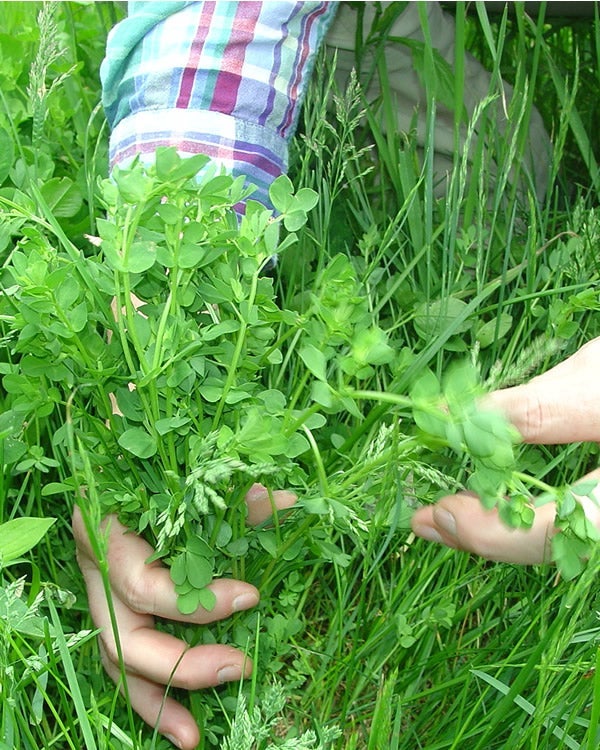
Background
One of the most promising findings in the last 15 years in the search for alternative GIN parasite control has been the discovery that the consumption of specific forages containing condensed tannins (CT) has been effective in suppressing GIN infection in sheep and goats. Condensed tannins (CT), also called proanthocyanidins, are naturally occurring plant compounds that significantly affect the nutritional value of forage by forming complexes with proteins, carbohydrates and minerals.
Birdsfoot trefoil (Lotus corniculatus L.) has recently been identified as a promising CT forage well suited to Northeast growing conditions. It is a legume that minimizes bloat, improves protein uptake and has other environmental benefits in addition to possible anti-parasitic effects. Other promising CT legume forages include Sanfoin (more suited to western U.S.) and Sericea lespedeza (does not over-winter well in colder climates).
[box style=”light-yellow shadow” ]
URI Research
URI is conducting research to evaluate Birdsfoot trefoil, and its potential anti-parasitic and nutritional effects in small ruminants. Visit current and recent projects on this topic.
Sept. 2018 – Aug. 2021: USDA NIFA Organic Transitions Program project entitled, Overcoming barriers to transitioning small ruminants to organic production: Effects of feeding birdsfoot trefoil on parasite control, nutritional status & profitability
Sept. 2012 – August 2017: USDA NIFA Organic Research and Extension Initiative project entitled, Forage-based Parasite Control in Sheep and Goats In the Northeast U.S.
Lead URI researchers:
Rebecca Brown, Ph.D. – brownreb@uri.edu
Dept. Plant Sciences and Entomology
Katherine Petersson, Ph.D. – kpetersson@uri.edu
Dept. Fisheries, Animal and Veterinary Sciences
[/box]
[hr color=”dark-gray” width=”100%” border_width=”4″ ]
